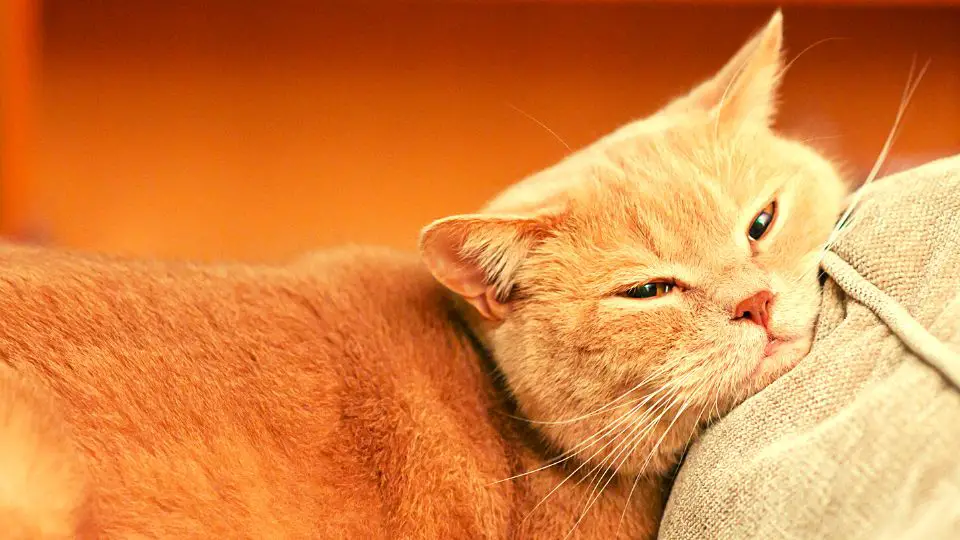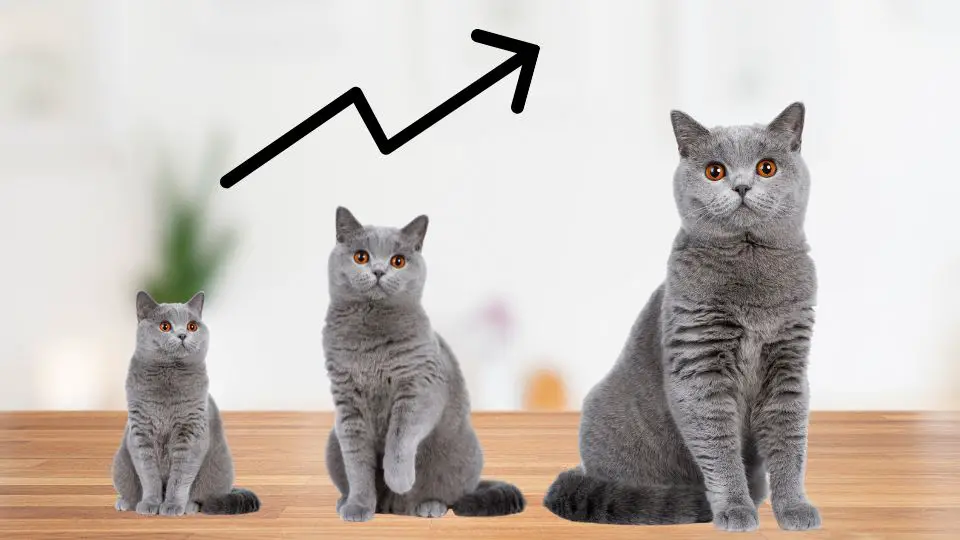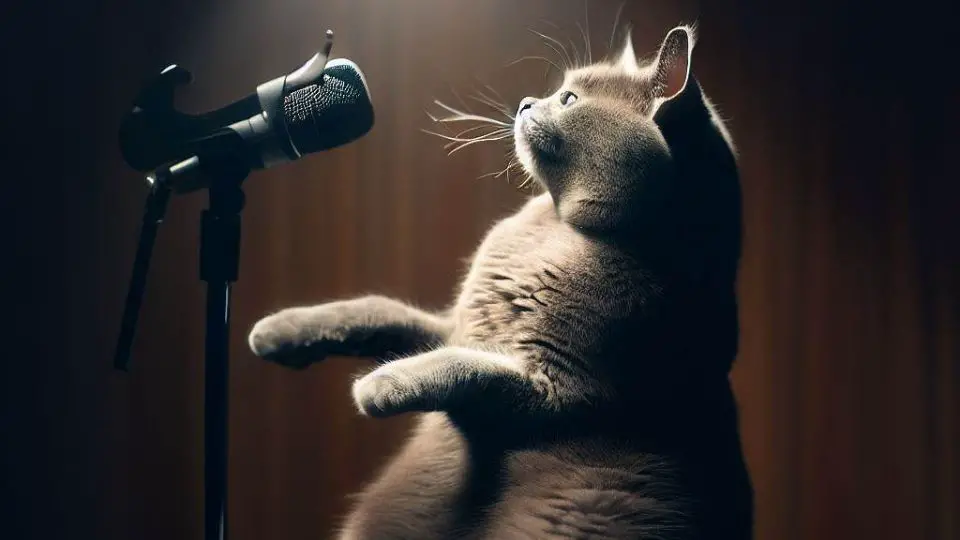As a proud owner of a British Shorthair, you know that this breed is known for their thick, luxurious coat that requires regular grooming to keep it healthy and shiny.
In this comprehensive guide, we will cover everything you need to know about grooming your British Shorthair, including the best tools and techniques for brushing, bathing, nail care, ear and eye care, dental care, and managing shedding.
Plus, we’ll share 20 expert tips to make grooming your British Shorthair a breeze. Whether you’re a first-time cat owner or a seasoned pro, this guide has something for everyone. So, let’s dive in!
Why is it necessary to groom your British Shorthair?
If you are a British Shorthair owner, you know how important it is to keep your feline friend looking and feeling their best. Regular grooming is an essential part of ensuring your kitty stays healthy, happy, and beautiful.
Keeps your cat healthy
Regular grooming keeps your cat healthy and free from parasites, infections, and injuries. Felines are naturally fastidious creatures and spend a significant amount of time grooming themselves. However, even the most dedicated self-groomer can miss spots, which can lead to skin irritations or infections. Regular grooming sessions can help you catch these problems early and prevent them from becoming serious.
Check for possible health issues and injuries
Grooming sessions allow you to check for possible health issues and injuries. During a grooming session, you can inspect your cat’s skin and coat for any signs of lumps, bumps, or injuries. You can also check their ears for any signs of infection or ear mites. Catching these issues early can make a big difference in your cat’s health and well-being.
Distribute natural oils over the coat
Brushing helps distribute natural oils over the coat, making it soft and shiny. British Shorthairs have a short, dense coat that requires minimal grooming. However, regular brushing can help distribute natural oils over their coat, making it soft and shiny. This also helps remove dead hair, which can prevent hairballs caused by ingesting too much dead hair while grooming.
Prevents hairballs caused by ingesting dead hair
As mentioned, regular brushing can help prevent hairballs caused by ingesting too much dead hair. Hairballs can be a real problem for cats, causing discomfort and even vomiting. By removing dead hair through brushing, you can help prevent this issue.
Brushing and Combing
As a pet owner, it is essential to keep your British Shorthair healthy and well-groomed. One of the primary responsibilities of a pet owner is to regularly brush and comb their cat’s fur. Regular grooming helps prevent hairballs, keeps your cat’s coat shiny and healthy, and allows you to check for possible health issues and injuries.
Best brushes and combs for British Shorthair coats
- The slicker brush: an ideal tool for removing dead hair and tangles from the coat.
- The bristle brush: helps distribute natural oils through the coat and is suitable for regular brushing.
- The stainless-steel comb: useful for detangling hair and removing mats from the coat.
Techniques for brushing and combing
- Start by gently stroking the cat’s back with your hand or a soft brush to get them used to being touched.
- Use a slicker brush to remove any tangles or mats from the fur.
- Follow up with a bristle brush to remove any loose hair and distribute natural oils.
- Use a stainless-steel comb to detangle any remaining knots and to finish off the grooming session.
Frequency of brushing and combing
- Brush your British Shorthair at least once a week to keep their coat healthy and shiny.
- During the shedding season, increase the frequency of brushing to two or three times a week to remove excess hair and prevent hairballs.
- If your cat has long hair or is prone to matting, you may need to brush and comb them more frequently to prevent tangles and mats from forming.
Bathing
Bathing your British Shorthair is an essential part of grooming that helps to keep them clean, healthy, and smelling fresh. While British Shorthairs generally don’t require frequent baths, occasional bathing can help to remove dirt, grime, and parasites from their coat. However, giving your cat a bath can be a daunting task, especially if they are not used to water.
When to bathe your British Shorthair
British Shorthairs are generally clean cats and do not require frequent bathing. However, if your cat gets into something dirty or smelly, or if they have a skin condition that requires treatment, you may need to give them a bath. Additionally, if your cat is a show cat, you may need to bathe them more frequently to keep their coat in pristine condition.
Recommended products for bathing
When it comes to bathing your British Shorthair, it’s important to use products that are safe for cats and won’t irritate their skin. You should choose a high-quality cat shampoo that is specifically formulated for their coat type.
Avoid using human shampoos or dish soap, as they can be too harsh for your cat’s delicate skin. Additionally, you should choose a non-slip mat for the bottom of the tub or sink to prevent your cat from slipping and injuring themselves.
Techniques for bathing
Before bathing your British Shorthair, brush their coat to remove any loose hair or tangles. This will help to prevent mats and make the bathing process easier. You should also trim your cat’s nails to prevent them from scratching you or themselves during the bath.
When it’s time to bathe your cat, fill the tub or sink with warm water to a level that covers their legs but doesn’t submerge their head. Wet your cat’s coat with a handheld showerhead or a cup, being careful not to get water in their eyes, nose, or ears. Apply a small amount of cat shampoo to their coat and massage it in gently, working from their head to their tail. Rinse thoroughly, making sure to remove all of the shampoo.
After the bath, wrap your cat in a towel and gently pat them dry. You can also use a blow-dryer on a low heat setting, but be careful not to get too close to their skin or use high heat, which can cause burns.
Frequency of bathing
As previously mentioned, British Shorthairs do not require frequent bathing. In fact, too much bathing can strip their coat of its natural oils and cause dry skin.
Most cats can go several months between baths, but if your cat gets into something dirty or smelly, you may need to bathe them sooner. If you’re unsure how often to bathe your British Shorthair, consult with your veterinarian for guidance.
Nail Care
Keeping your British Shorthair’s nails trimmed is an important part of their grooming routine. Not only does it prevent damage to furniture and carpets, but it also keeps your cat healthy and comfortable. Long nails can cause discomfort when walking or running and can even become ingrown, leading to infections.
Recommended tools for trimming nails
When it comes to trimming your cat’s nails, remember to have the right tools. A good quality pair of clippers specifically designed for cats is essential. You can also use a nail grinder or file, depending on your cat’s preference and your own comfort level with the tools.
Techniques for trimming nails
Here’s a step-by-step guide to help you trim your British Shorthair’s nails:
Step 1: Choose the right tools
Make sure you have the right tools before you begin. You’ll need a pair of sharp, high-quality nail clippers specifically designed for cats. Avoid using human nail clippers, as they are not designed for animal nails and can cause your cat pain or injury. You may also want to have styptic powder on hand to stop bleeding in case you accidentally cut the quick.
Step 2: Get your cat comfortable
Choose a quiet, calm room for nail trimming and place your cat on a flat surface like a table or counter. Make sure they are relaxed and comfortable before starting. You can offer treats or play with them to help them feel at ease.
Step 3: Hold your cat’s paw
Hold your cat’s paw gently but firmly in your hand. Use your thumb to press down on the pad of their paw to extend the nail. This will make it easier to see the quick and avoid cutting it.
Step 4: Trim the nail
With the nail extended, use the clippers to trim the tip of the nail, making sure to avoid the quick. Cut at a 45-degree angle, taking care not to cut too close to the quick. If your cat has dark nails and you can’t see the quick, trim a little bit at a time until you see a black dot in the center of the nail. This is the beginning of the quick, so you should stop trimming at this point.
Step 5: Repeat on all four paws
Repeat the process on all four paws, taking care to trim only the tips of the nails and avoid the quick.
Step 6: Reward your cat
Once you’ve finished trimming your cat’s nails, give them a treat or a cuddle to reward them for their cooperation. This will help them associate nail trimming with positive experiences.
Frequency of nail trimming
The frequency of nail trimming will depend on your cat’s individual needs. Some cats naturally wear down their nails through play and scratching, while others may require more frequent trimming. A good rule of thumb is to trim your cat’s nails every 2-4 weeks.
Ear and Eye Care
Proper care of your British Shorthair’s ears and eyes is essential to maintain their overall health and well-being. Regular cleaning helps prevent infections, irritations, and other issues that can cause discomfort and pain for your feline friend.
You can find various cleaning solutions, wipes, and drops available in the market. However, it is best to consult with your veterinarian to determine the most appropriate products for your cat’s individual needs.
For cleaning eyes, you can use a soft, damp cloth or cotton ball. You can also use specially formulated eye drops or wipes, which can help remove dirt, dust, and other debris that may have accumulated around your cat’s eyes.
For cleaning ears, you can use a damp cotton ball or gauze. However, if your cat’s ears are prone to infections, you may want to use a specialized ear cleaner that can help remove excess wax and debris without causing any harm.
Techniques for cleaning
When cleaning your British Shorthair’s eyes, start by wiping the corners of their eyes gently with a damp cloth or cotton ball. Use a new cloth or ball for each eye to prevent cross-contamination. If you notice any discharge or inflammation, consult with your veterinarian.
For cleaning your cat’s ears, wrap a damp cotton ball or gauze around your index finger and use it to wipe the inside of their earflaps gently. Avoid going too deep into the ear canal, as this can cause discomfort and even injury. If you notice any unusual discharge or odor, consult with your veterinarian immediately.
Frequency of cleaning
The frequency of cleaning your British Shorthair’s eyes and ears will depend on your cat’s individual needs. For most cats, cleaning their eyes and ears once or twice a week is sufficient. However, if your cat is prone to infections or other issues, your veterinarian may recommend more frequent cleaning.
Dental Care
Dental care is essential for British Shorthairs because it can prevent dental problems such as gingivitis, tooth decay, and periodontal disease. If left untreated, dental problems can lead to serious health issues such as heart disease, liver disease, and kidney disease. Therefore, it’s important to take care of your British Shorthair’s teeth and gums by providing them with proper dental care.
There are several products that you can use to take care of your British Shorthair’s dental health. These include:
- Toothbrush: A soft-bristled toothbrush designed specifically for cats is ideal for brushing your British Shorthair’s teeth.
- Toothpaste: Use a toothpaste that is specially formulated for cats. Avoid using human toothpaste as it contains ingredients that are toxic to cats.
- Dental treats: Dental treats can help reduce plaque and tartar buildup on your British Shorthair’s teeth. Look for treats that are specifically designed for dental health.
- Water additives: Some water additives can help reduce plaque and tartar buildup on your British Shorthair’s teeth.
Techniques for dental care
To keep your British Shorthair’s teeth and gums healthy, follow these dental care techniques:
- Brush your British Shorthair’s teeth daily using a soft-bristled toothbrush and toothpaste formulated for cats.
- Provide your British Shorthair with dental treats that help reduce plaque and tartar buildup.
- Add water additives to your British Shorthair’s water bowl to help reduce plaque and tartar buildup.
- Schedule regular dental checkups with your veterinarian to ensure that your British Shorthair’s teeth and gums are healthy.
Frequency of dental care
It’s recommended to brush your British Shorthair’s teeth daily. Additionally, dental treats and water additives should be provided as directed by the manufacturer. Regular dental checkups with your veterinarian should be scheduled at least once a year to ensure that your British Shorthair’s teeth and gums are healthy.
Dealing with Shedding
Shedding is a natural process for all cats, including British Shorthairs. The breed’s short, dense coat sheds moderately throughout the year, with heavier shedding occurring during the spring and fall seasons.
Shedding is caused by a variety of factors, including genetics, seasonal changes, and hormonal shifts. While shedding is a normal part of a cat’s life, it can be problematic for owners who want to keep their homes clean and free of excess fur.
Recommended tools for dealing with shedding
To effectively manage shedding in British Shorthairs, you need to have the right tools. Here are some recommended tools for dealing with shedding:
- Furminator: This is a specially designed grooming tool that helps remove loose fur from your cat’s coat. It’s designed to reach deep into the undercoat, removing dead hair without damaging your cat’s skin.
- Slicker brush: A slicker brush is an excellent tool for removing mats and tangles from your cat’s coat. It’s also useful for removing loose fur, dirt, and debris from your cat’s coat.
- Grooming gloves: Grooming gloves are an excellent alternative to brushes and combs. They’re designed to fit snugly over your hands, allowing you to massage your cat’s coat and remove loose fur at the same time.
- Lint roller: A lint roller is an excellent tool for removing excess fur from clothing, furniture, and other surfaces.
Tips for managing shedding
- Regular grooming: Regular grooming is the key to managing shedding in cats. Brushing your British Shorthair’s coat once or twice a week will help remove loose fur before it has a chance to shed all over your furniture.
- Good nutrition: Feeding your British Shorthair a high-quality diet will help maintain a healthy coat and reduce shedding. Look for cat food that contains essential fatty acids, which promote healthy skin and coat.
- Hydration: Make sure your cat stays hydrated by providing plenty of fresh water. Dehydration can lead to dry skin and excessive shedding.
- Keep your home clean: Vacuum and dust your home regularly to remove loose fur from furniture and carpets. Using a lint roller can also help remove fur from clothing and upholstery.
- Use air filters: Consider using air filters to remove pet hair and dander from the air. This can help reduce the amount of fur that ends up on your furniture and clothing.
- Bathe your cat: Bathing your British Shorthair once a month can help remove loose fur and reduce shedding. Use a cat-specific shampoo and conditioner to avoid drying out your cat’s skin.
- Consider a grooming tool: Some grooming tools, such as deshedding brushes and combs, can help remove loose fur from your British Shorthair’s coat. Make sure to choose a tool that is appropriate for your cat’s coat type.
20 Grooming Tips For British Shorthairs
Here is a list of 20 grooming tips for British Shorthairs:
- Brush your British Shorthair’s coat regularly to prevent matting and shedding.
- Use a high-quality brush that is gentle on your cat’s skin and effective at removing dead hair.
- Consider using a de-shedding tool during heavy shedding periods to reduce the amount of hair your cat sheds.
- Use a damp cloth or pet wipes to clean your cat’s coat between baths.
- Bathe your British Shorthair occasionally using a gentle, cat-specific shampoo.
- Use a towel or low-heat hair dryer to dry your cat’s coat after a bath.
- Trim your cat’s nails regularly to prevent overgrowth and injury.
- Use a cat-specific nail trimmer or scissors to avoid causing pain or damage to the nails.
- Clean your cat’s ears regularly using a gentle ear cleaning solution and cotton balls.
- Check your cat’s ears for signs of infection or inflammation, such as redness or discharge.
- Use a cat-specific toothbrush and toothpaste to clean your cat’s teeth and prevent dental problems.
- Offer your cat dental chews or toys to help keep their teeth clean and healthy.
- Check your cat’s eyes regularly for signs of irritation, discharge, or infection.
- Use a damp cloth to gently clean around your cat’s eyes and remove any discharge.
- Consider using a feline-specific eye cleaner to help prevent eye infections.
- Brush your cat’s tail to prevent matting and keep it healthy.
- Use a flea comb to check for fleas and remove any fleas or flea dirt from your cat’s coat.
- Consider using a flea preventative medication to keep your cat flea-free.
- Use a pet-safe disinfectant to clean your cat’s litter box and surrounding area regularly.
- Offer your cat plenty of fresh water and high-quality food to help maintain a healthy coat and overall health.
Conclusion
In conclusion, grooming is an essential aspect of caring for your British Shorthair cat. Regular grooming not only helps keep your cat’s coat healthy and shiny, but it also helps you monitor their overall health and well-being.
With the tips and techniques discussed in this article, you can ensure that your British Shorthair looks and feels their best. Remember, taking the time to groom your cat can strengthen the bond between you and your feline friend and ensure their health and happiness for years to come.







